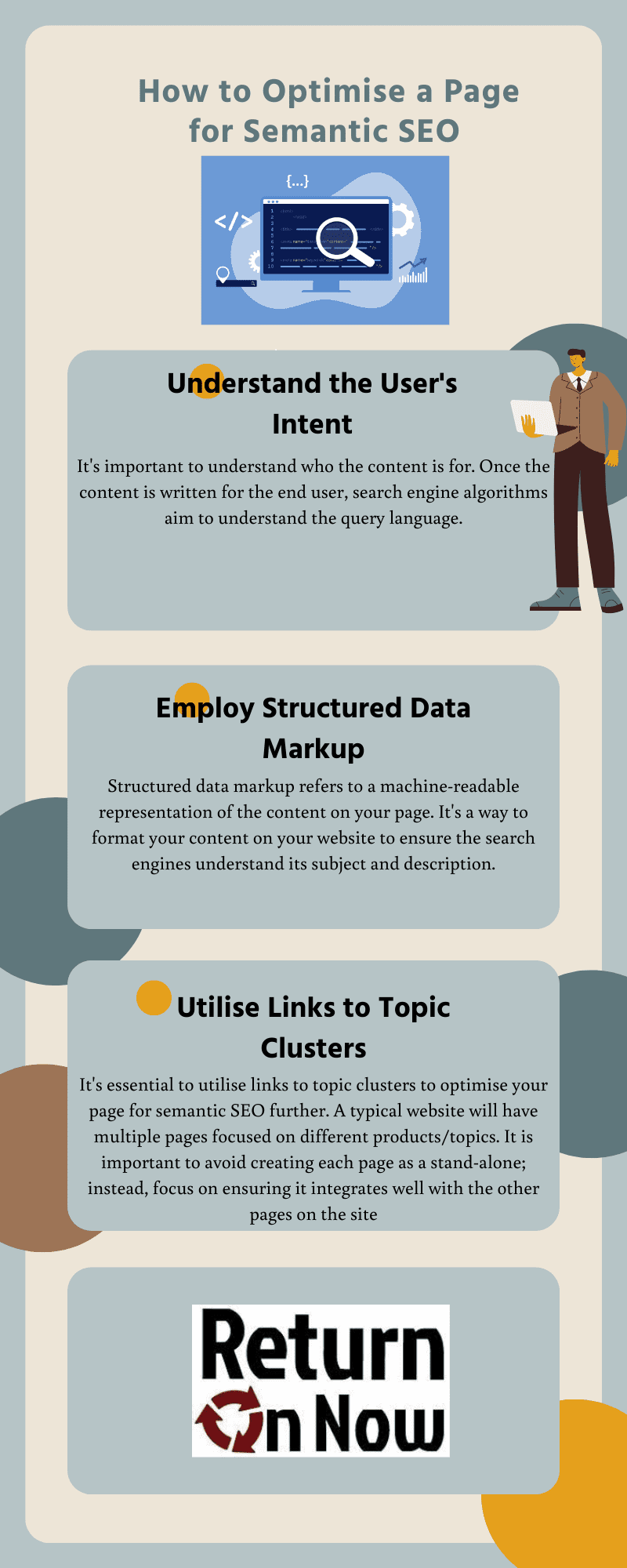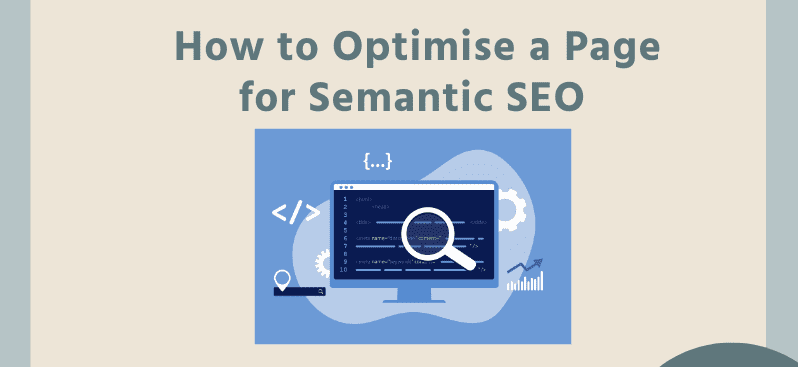Modern businesses are constantly looking for new ways to enhance the quality of their content and create compelling pages to please search engine algorithms and attract more clients.
All the effort to develop enthralling landing and product pages takes a lot of thought, time, and words.
Right when you feel you have got all that figured out, your competition finds a way to get ranked above you on search engine results pages (SERPs). So, how do you stay a step ahead of your competition?
The simple answer to that question is semantic SEO. In this post, we will discuss how to optimize a page for semantic SEO.
But first, let’s delve deeper into what semantic SEO means.
What is Semantic SEO?
In its most basic dictionary definition, semantic SEO refers to the process of making our web content more machine-readable to give it topical depth.
It’s all about giving more meaning to your content, ensuring search engine algorithms understand it. This will in turn enhance the user’s search experience.
It is essential to create your content in a structured and well-organized way so that the search engine algorithms can easily analyze and make better sense of it.
If the search engine crawlers understand your content, it is easier to get ranked high on the SERPs.
Use Links to Topic Clusters
Besides using structured data markup, it is essential to use links to topic clusters to optimize your page for semantic SEO further.
A typical website will have multiple pages focused on different products or topics. It is important to avoid creating each page as a stand-alone. Instead, focus on ensuring it integrates well with the other pages on the site.
And that’s where links to topic clusters come in.
Similar to keyword clusters, topic clusters refer to any piece of information that’s relevant to the content on your landing page.
Providing a link to such pertinent information helps enrich the user experience while encouraging visitors to explore your site more. If you are lucky enough, they might find and purchase other products or services from your business.
Semantic SEO: Bottom Line
Implementing semantic SEO is one of the easiest ways to improve your content’s performance today.
There are many tips on optimizing your page for semantic SEO. However, these are the top ones on the list.
Besides focusing on user intent, structured data markup, and topic clusters, you can also include synonyms and traditional SEO.
The primary goal is to ensure search engine algorithms understand your content better, enhancing your overall ranking on SERPs.
The following Infographic, courtesy of Digital Funnel, summarizes the key points outlined above:


Dylan Thebault
Latest posts by Dylan Thebault (see all)
- How to Optimize a Page for Semantic SEO [INFOGRAPHIC] - November 22, 2022





